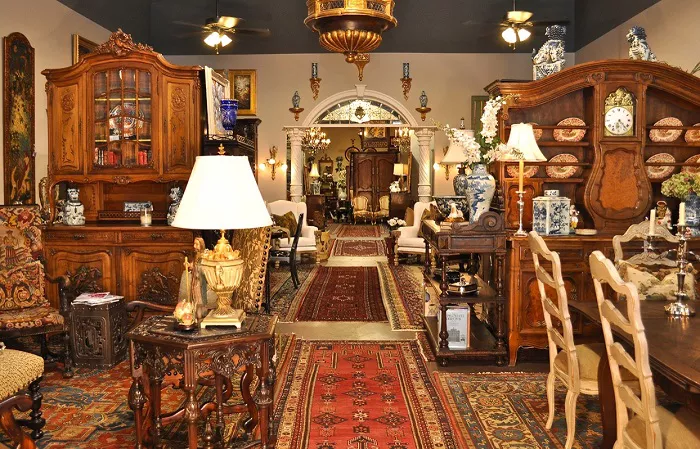Antique art valuation is an intricate blend of historical knowledge, market awareness, aesthetic sensibility, and investigative rigor. Whether you are a seasoned collector, a novice inheritor, or an investor seeking to diversify into fine art, accurately valuing antique pieces is vital to making informed decisions. With the explosion of online marketplaces and global interest in antiquities, precise evaluation has become more complex—and more essential—than ever before.
This guide explores 5 expert-level strategies for determining the value of antique art, drawing upon decades of collecting experience and real-world appraisal methodology. Each technique is rooted in professional practice and aims to equip you with the tools and mindset of a true connoisseur.
5 Expert Tips to Value Antique Art
1. Understand Provenance: Trace the Lineage of Ownership
Provenance—the documented history of an artwork’s ownership—is often the most critical determinant of value. An artwork linked to a prominent historical figure, notable estate, or esteemed gallery often carries a premium, and sometimes even serves to authenticate a piece. Experts begin by asking: Who owned it? When? And how did it change hands?
To verify provenance, consult archival documents, estate inventories, exhibition catalogues, and sales receipts. Seek corroborating sources from museums, libraries, and reputable auction houses. When gaps appear in the provenance trail, be cautious—these could indicate either a benign lapse in documentation or potential issues like forgeries or theft.
Provenance doesn’t just enhance monetary value; it contextualizes the piece in a broader historical narrative. A simple 18th-century portrait may rise in value if connected to a significant cultural figure or event.
2. Evaluate Materials and Craftsmanship with Scholarly Precision
The materials and craftsmanship of antique art provide crucial insights into its origin, authenticity, and worth. A hand-carved Baroque frame, for instance, signals a different level of value than a machine-made Victorian reproduction.
Experts study the medium—wood, canvas, bronze, ivory, parchment—and analyze how it has aged. They examine patinas, tool marks, brushwork, stitching, and mounting methods. Knowledge of historical manufacturing techniques can separate a genuine Chippendale from a later revival piece.
Microscopy and infrared spectroscopy, once limited to museums, are now accessible to high-end appraisers. These tools reveal underdrawings, pigment composition, and even prior restorations. However, seasoned collectors develop an instinct for materials over time. The weight of bronze, the touch of vellum, the sheen of natural lacquer—these sensory details often tell more than a label.
3. Analyze Market Trends Without Succumbing to Them
The art market is notoriously capricious. Styles fall in and out of favor, geopolitical events affect demand, and celebrity collectors can inflate prices overnight. An informed valuer must discern these trends while maintaining an objective, long-term view of intrinsic value.
Follow major auction houses like Sotheby’s, Christie’s, and Bonhams. Study their sale archives to identify price trajectories and estimate comparables. Attend estate sales and antiques fairs to observe pricing behavior in less formal markets. Take note of which styles—Art Deco, Rococo, Arts & Crafts—are currently in vogue, but don’t overestimate trend-driven valuations.
Additionally, factor in geography. A 19th-century Japanese woodblock print may command higher prices in New York or London than in Kyoto, depending on collector interest and rarity abroad.
4. Authenticate with a Multilayered Approach
Authentication is both science and art. Even seasoned experts have been duped by sophisticated forgeries. A professional valuation involves verifying authenticity through stylistic analysis, historical comparison, scientific testing, and expert consultation.
Begin with stylistic consistency: does the artwork align with the known period and oeuvre of its purported creator? Compare it to catalogued works. Consider subject matter, brush technique, and iconographic motifs. Use signature analysis to determine whether the artist’s mark is genuine or spurious.
Where ambiguity remains, employ scientific tools. Carbon dating, X-ray fluorescence (XRF), and dendrochronology can all confirm or disprove an artwork’s purported age or composition. But results must be interpreted cautiously—artificial aging and creative restoration can mislead even high-tech instruments.
Lastly, consult recognized experts in the field. An attribution from a living scholar or a reputable authentication board can decisively impact value.
5. Consider Condition and Restoration—Past, Present, and Potential
An artwork’s condition dramatically affects its value. Even rare pieces lose desirability when extensively damaged, over-restored, or structurally compromised. Valuation requires a detailed condition report and an understanding of restoration history.
Check for cracks, discoloration, flaking paint, insect damage, or warped supports. Determine whether restorations were conservative (preserving original integrity) or invasive (altering aesthetic or structure). Restoration isn’t inherently negative—many museum pieces have been restored—but overzealous repair can reduce value.
Sometimes restoration adds value, especially when carried out by a notable conservator or when it halts active deterioration. Always factor in potential future restoration costs. A neglected canvas with potential may be a wise investment—if the value post-restoration exceeds the combined cost of purchase and repair.
Conclusion
Valuing antique art is never a purely numerical exercise—it’s an act of scholarship, intuition, and cultural fluency. Each piece carries a story, sometimes incomplete, often mysterious. The goal is not merely to assign a price tag, but to interpret that narrative through careful examination and educated insight.
Whether you’re evaluating a dusty attic find or a newly acquired masterpiece, these five strategies offer a professional framework for uncovering true worth. Practice them consistently, and you’ll sharpen your eye, deepen your knowledge, and earn your place among the world’s most discerning collectors.

